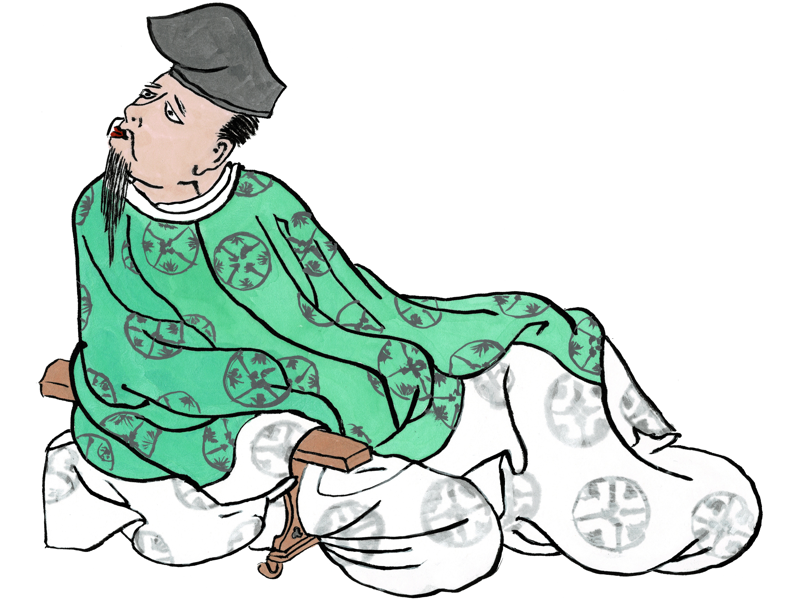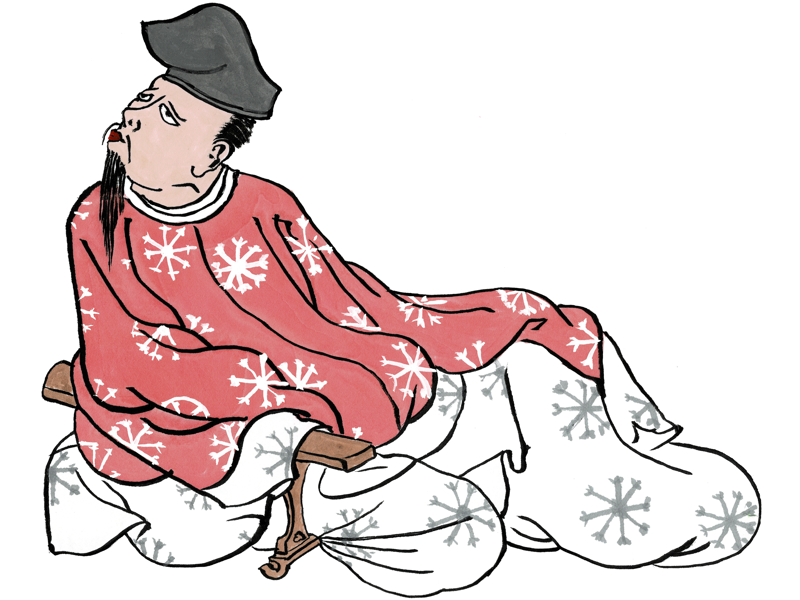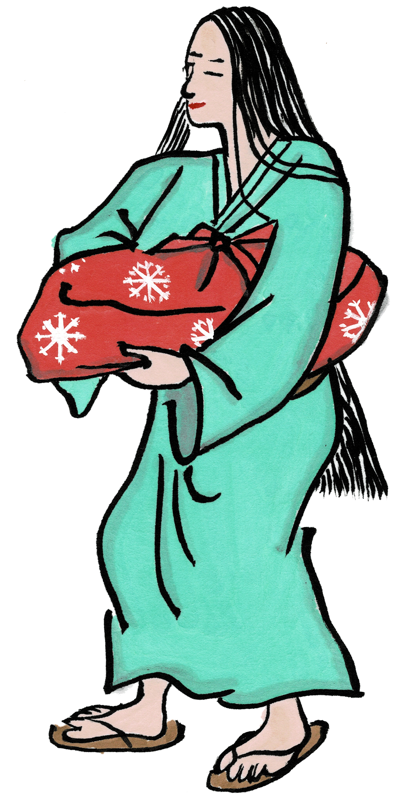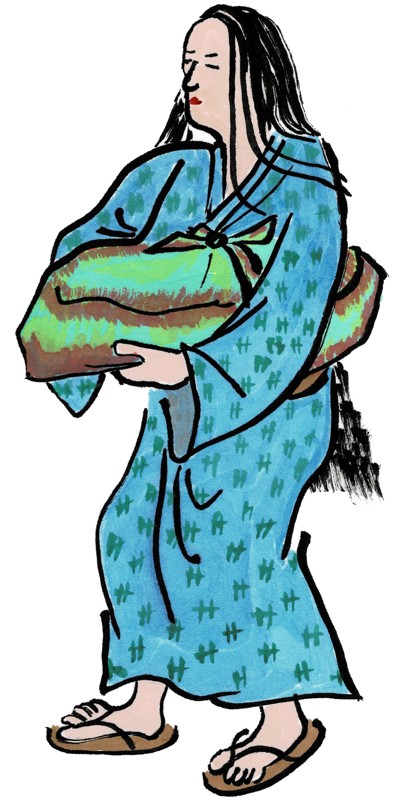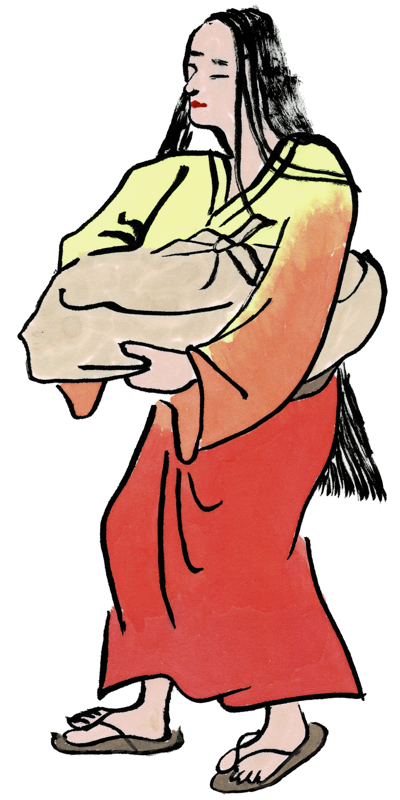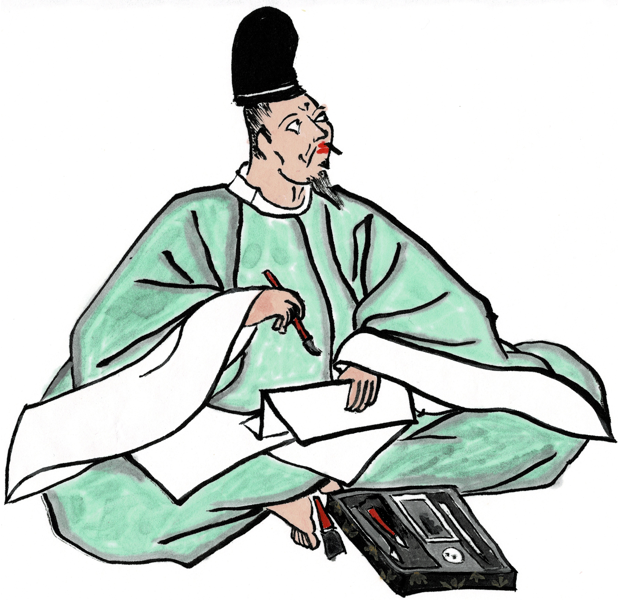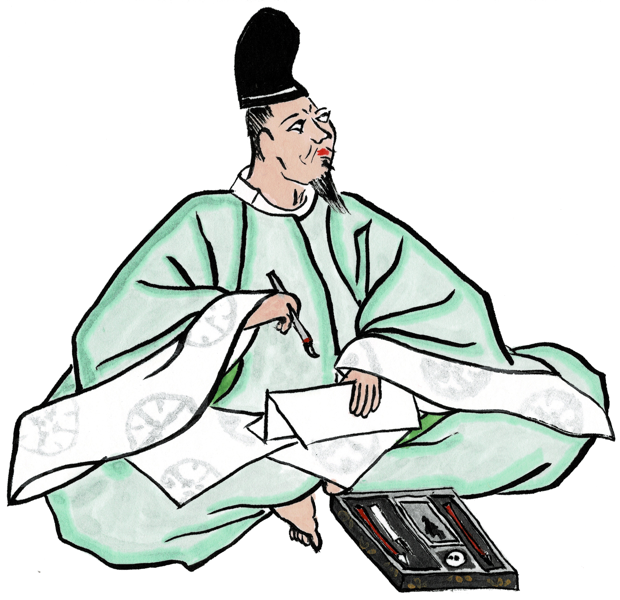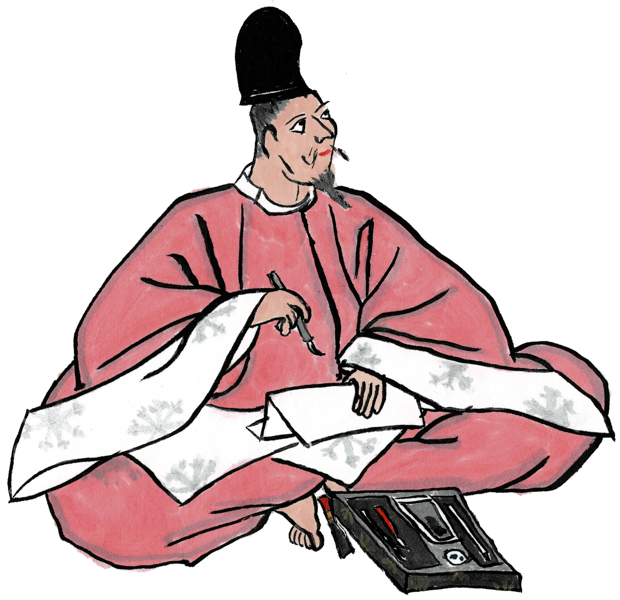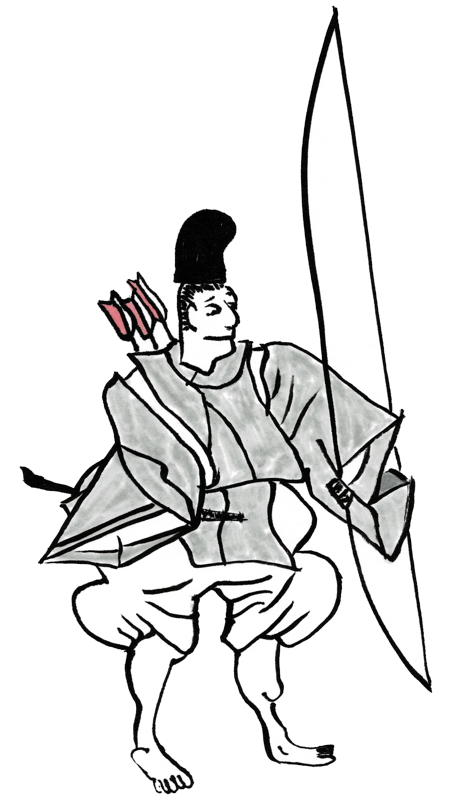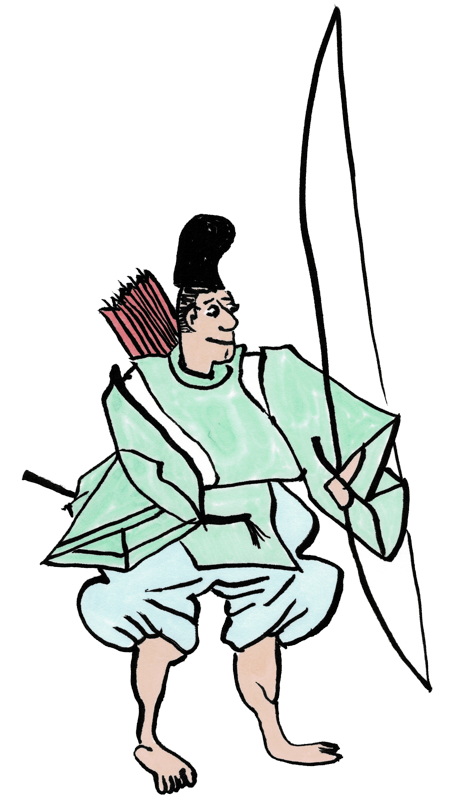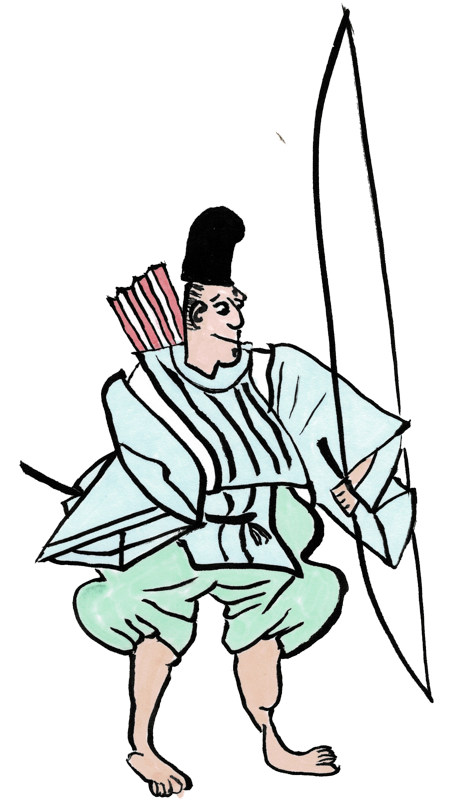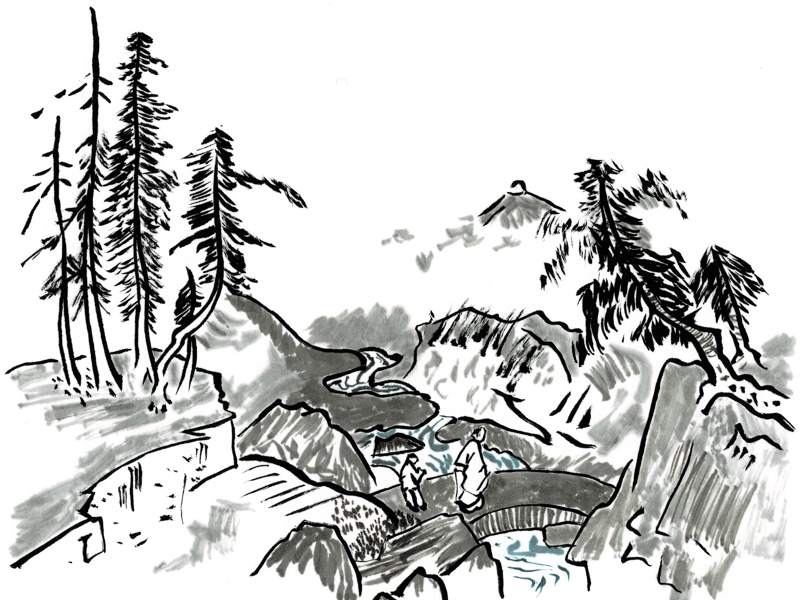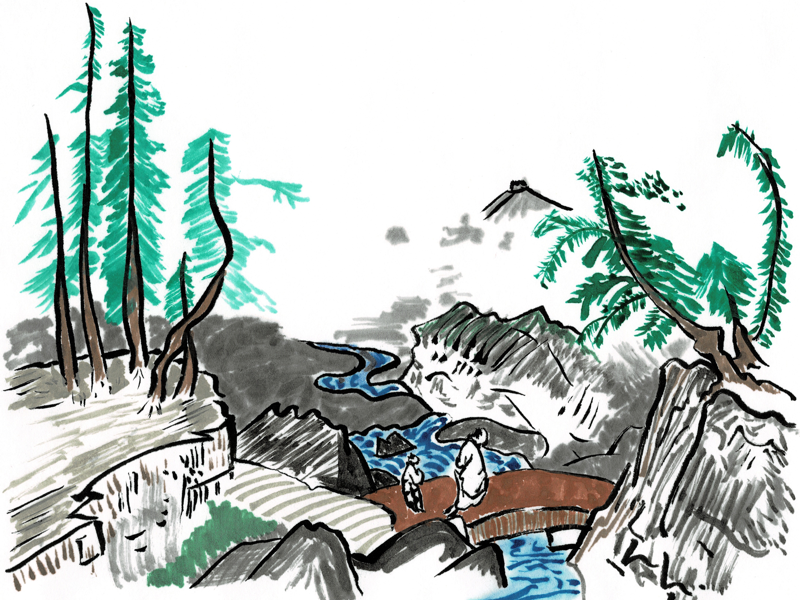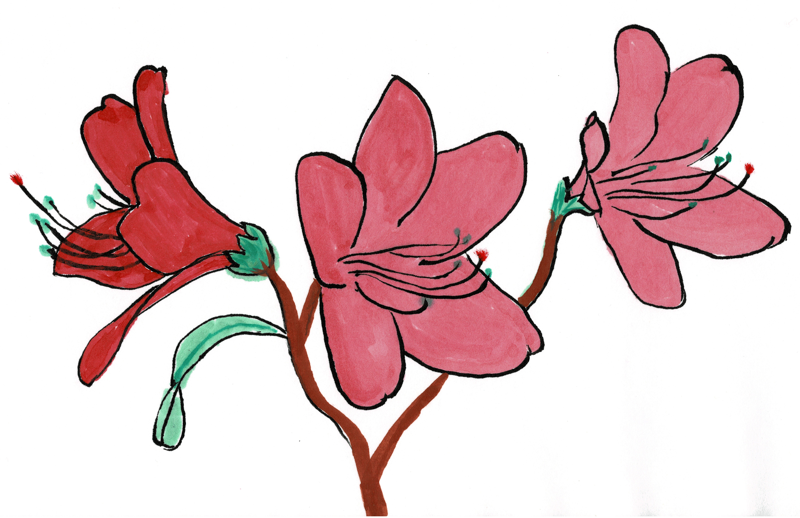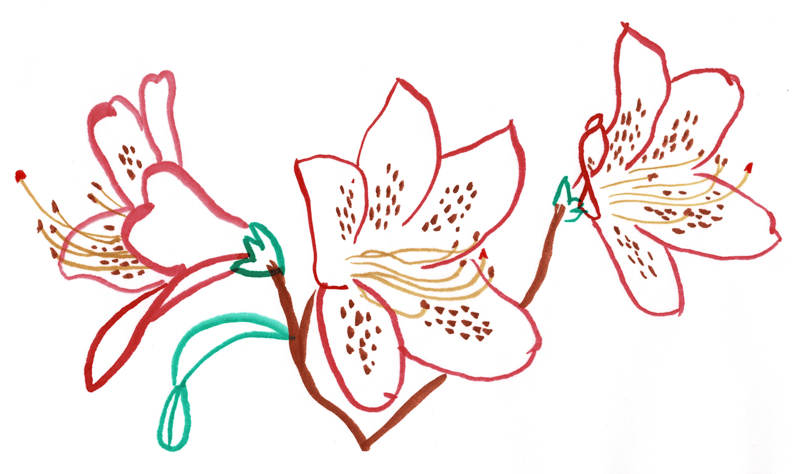This might be the last painting for a little while. I have some sewing to do, but I wanted to get to this portrait before I took a break.
This is a copy of a portrait of Hitomaro, one of the most famous and revered poets of Japanese history. He is so revered, that he was eventually made a Kami (divinity) of poetry. Essentially, he is a Patron Saint of poetry.
The above version was colored to match the original portrait I was imitating, which we saw in the Kyoto National Museum when we went to see the exhibition of panels from the Satake family version of the “36 Immortal Poets” scroll. I did a second copy of this image, but I colored his robe red for Aethelmearc and changed the “medallions” on the fabric to escarbuncles.
I have a third copy of the image that I did on larger calligraphy paper that I am attempting to mount as a kakejiku hanging scroll. Apparently it is the practice to hang a portrait of Hitomaro to oversee your poetic endeavors, so I wanted to have one of those handy for future use.

